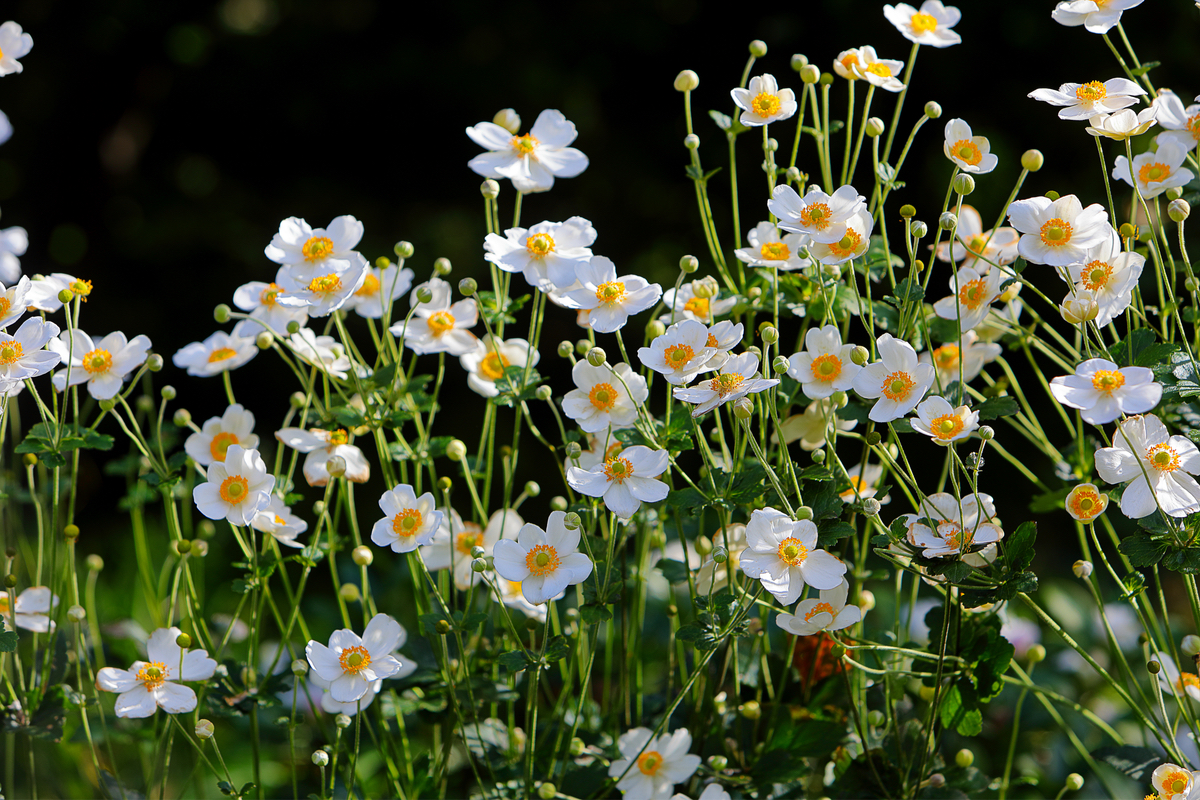The secrets to fantastical towers of cascading tubular bell-shaped foxgloves are not as mystical as they may appear.
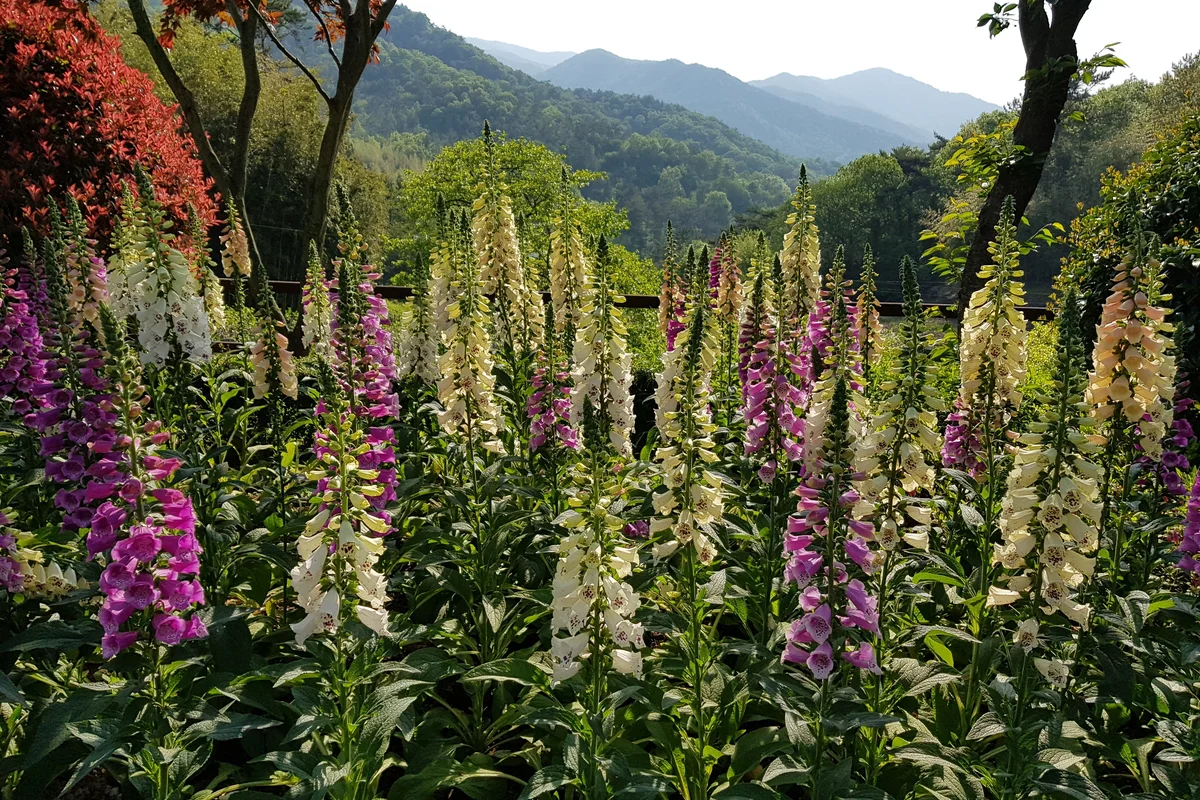
These natives of Europe, Asia, and North Africa are mostly biennials, meaning they live for just two years.
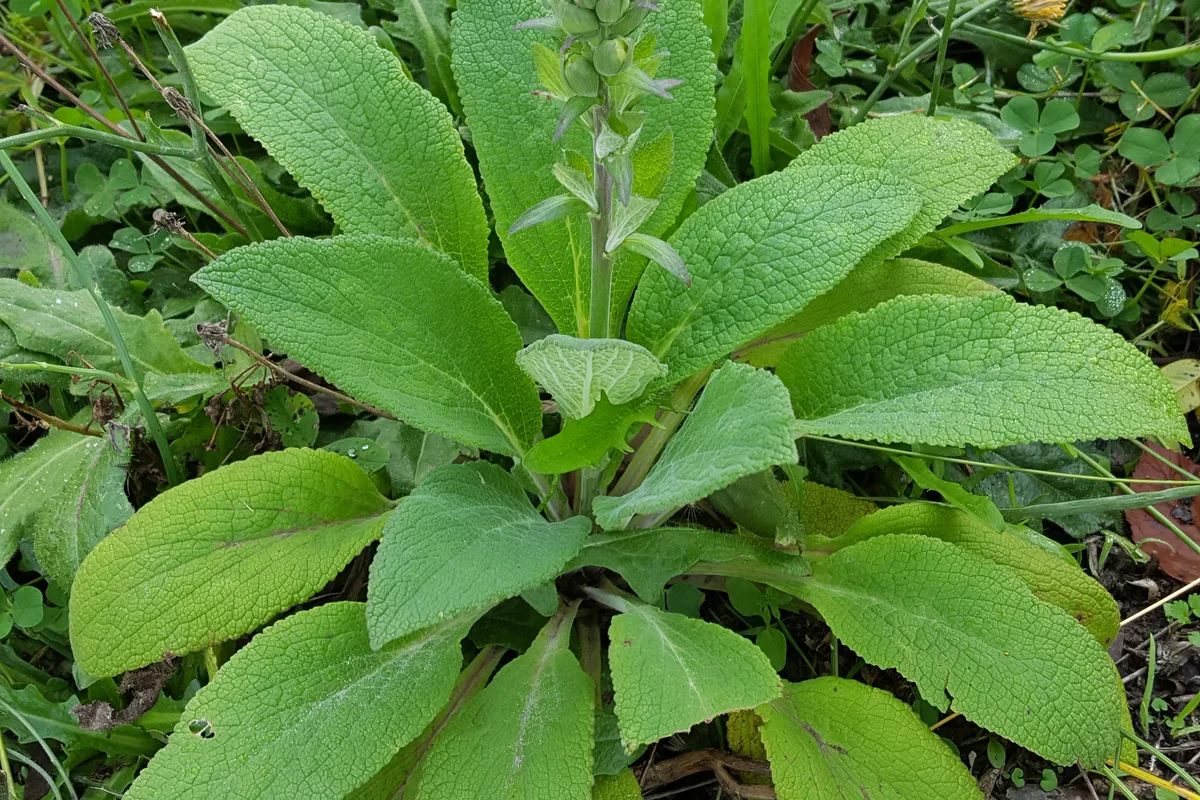
They grow in a mounding rosette in their first year and produce giant 2- to 6-foot spikes of smothered in speckled tubular flowers in the second year.
Ignored by deer and rabbits, hummingbirds reach the nectar with their long beaks.
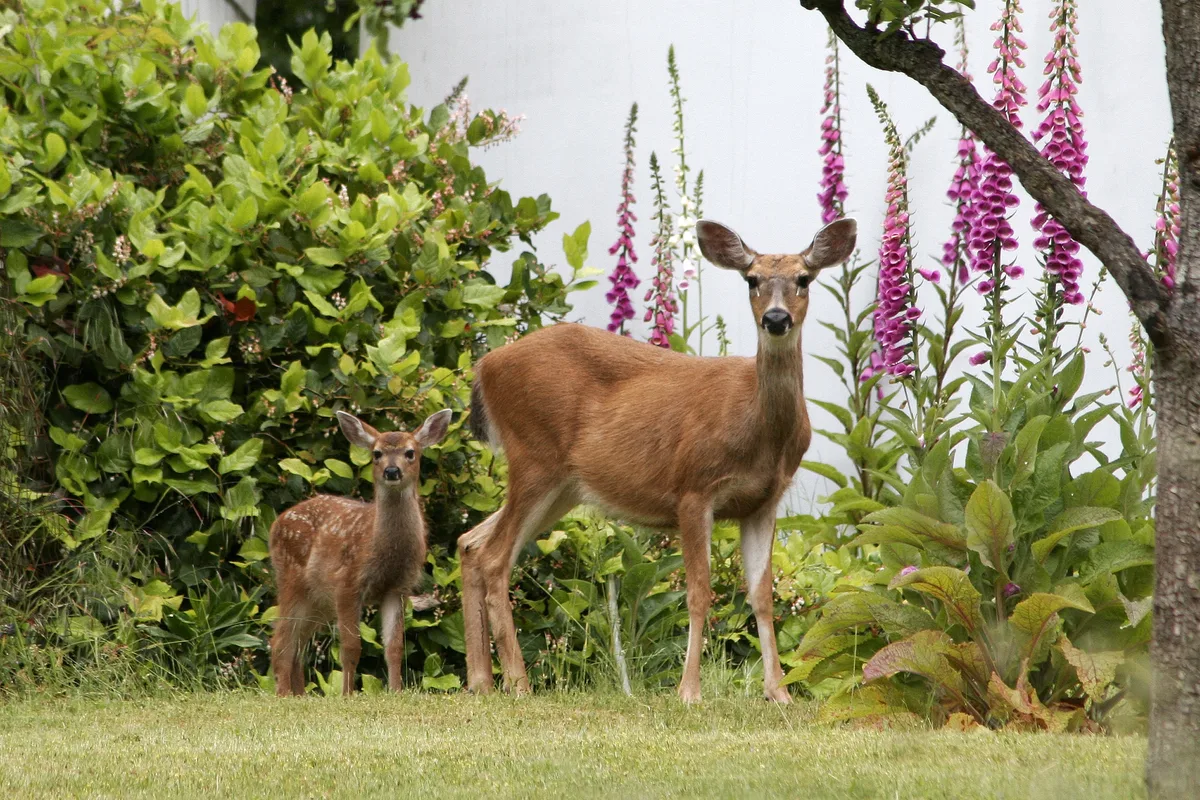
Bumblebees and other creatures crawl inside the cylindrical blooms to reach the pollen.
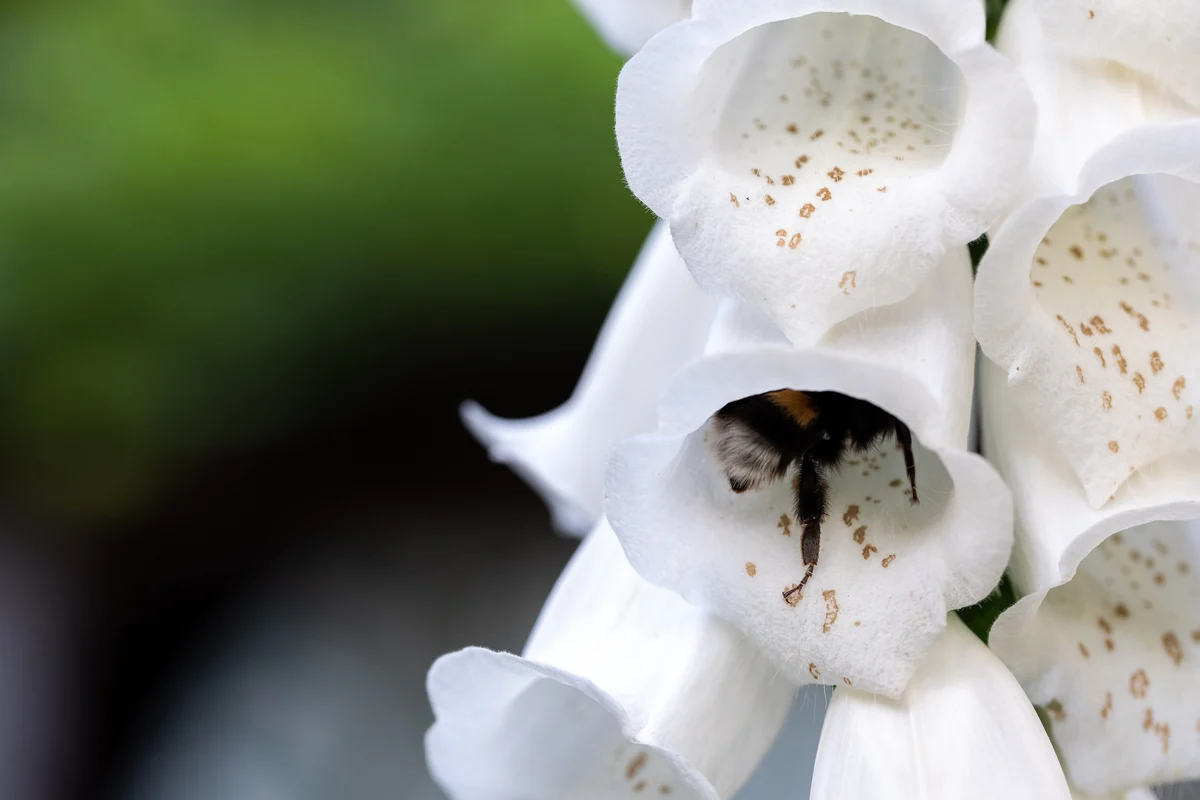
Foxgloves (Digitalis) yield powerful heart medicines, but all plant parts are toxic to humans and pets.
Loved for their long blooming season and dramatic vertical interest of speckled pinks, purples, whites, and yellows.
Grown from seed for second-year blooms or from two-year-old nursery plants, these tall plants grow 2 to 5 feet tall.
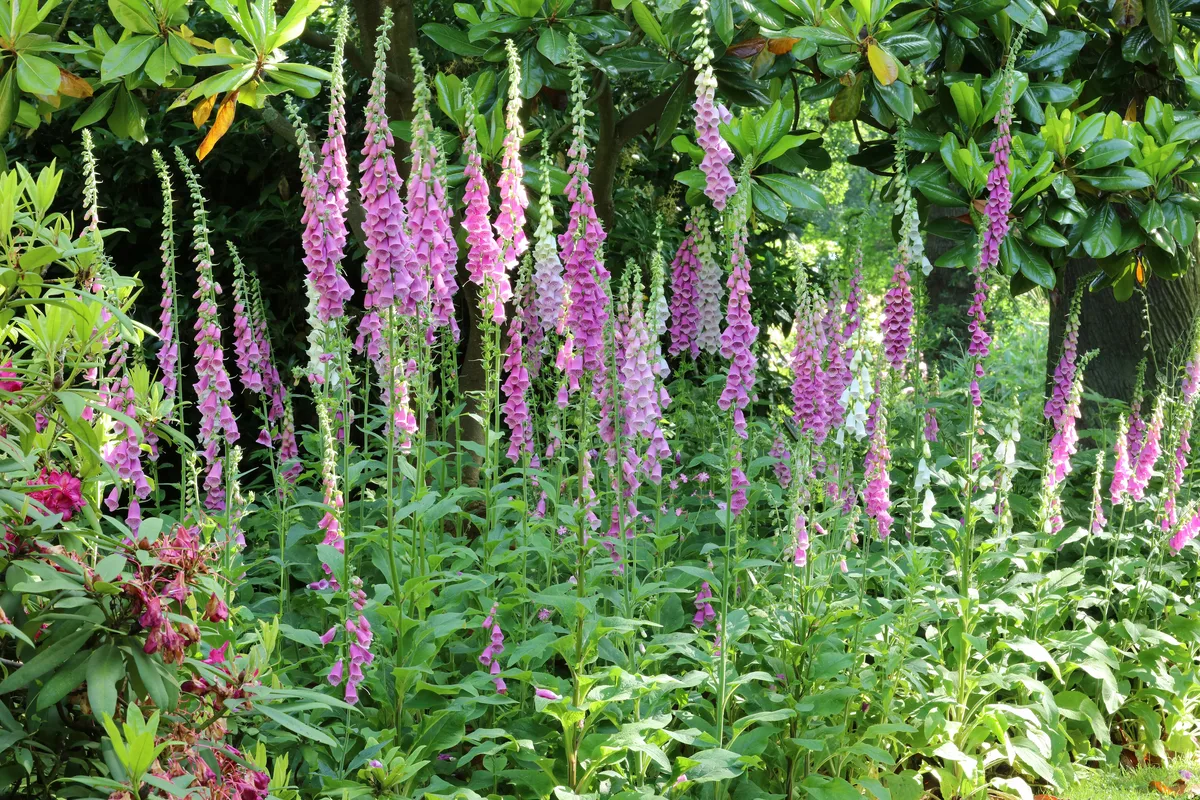
In perfect conditions, this biennial readily reseeds itself. Plant foxglove two years in a row and a naturalized foxglove colony may develop.
Each plant may produce 1 to 2 million seeds, which does put foxglove on the invasive plant list in some regions of the west coast and New England areas of the USA.
In whimsical cottage gardens, at the back of perennial borders, and in self-seeding naturalized gardens here are the secrets to fantastic foxgloves!
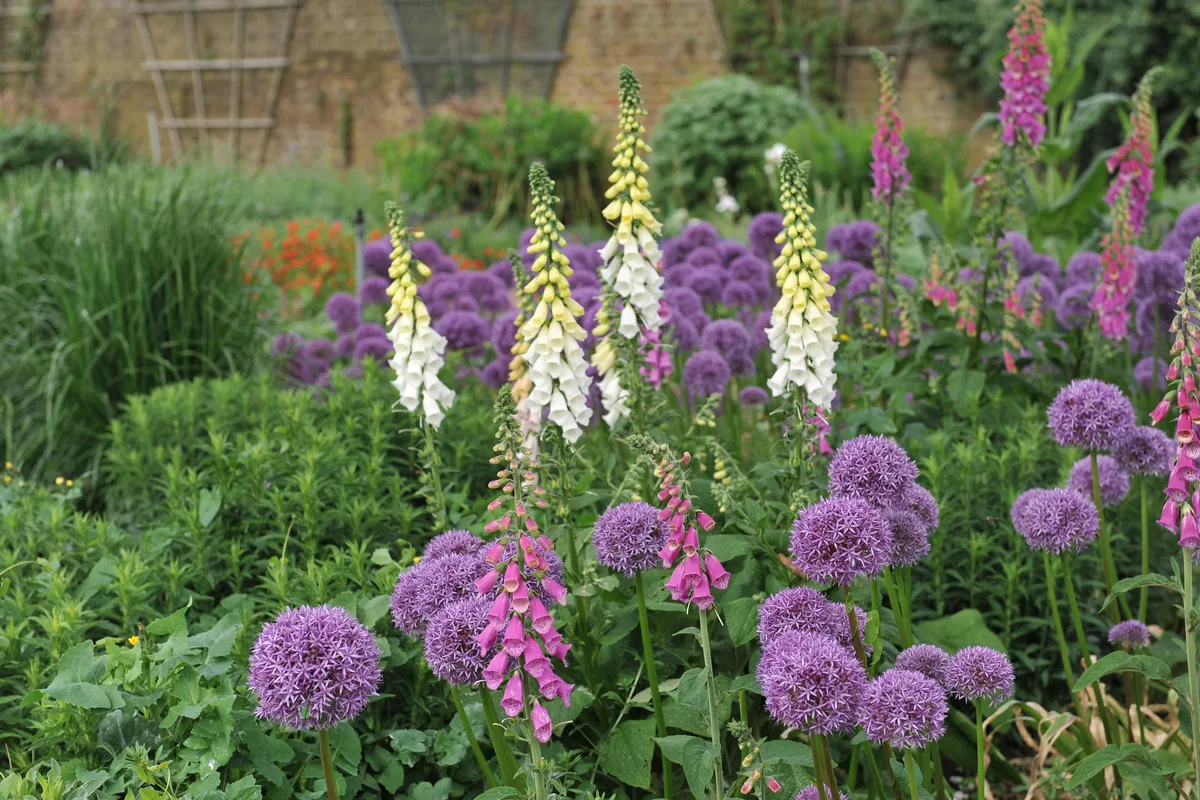
10 Secrets for Beautiful Foxgloves
Secret #1: Foxglove’s Favorite Soil
Humous-rich natural soils with layers of compost are the secrets of luscious spires of foxgloves.
Soils must be well-draining, particularly in wet winters where the plant’s crown is susceptible to rot.
Acidic soil with a pH of 5.5 to 6.5 is also a benefit for foxgloves.
Rich, natural soil with organic compost is the best way to feed foxgloves because nitrogen fertilizer is detrimental to foxglove flower formation.
The ideal condition for foxgloves is moist forest edges, perfect for shade-tolerant wildflowers.
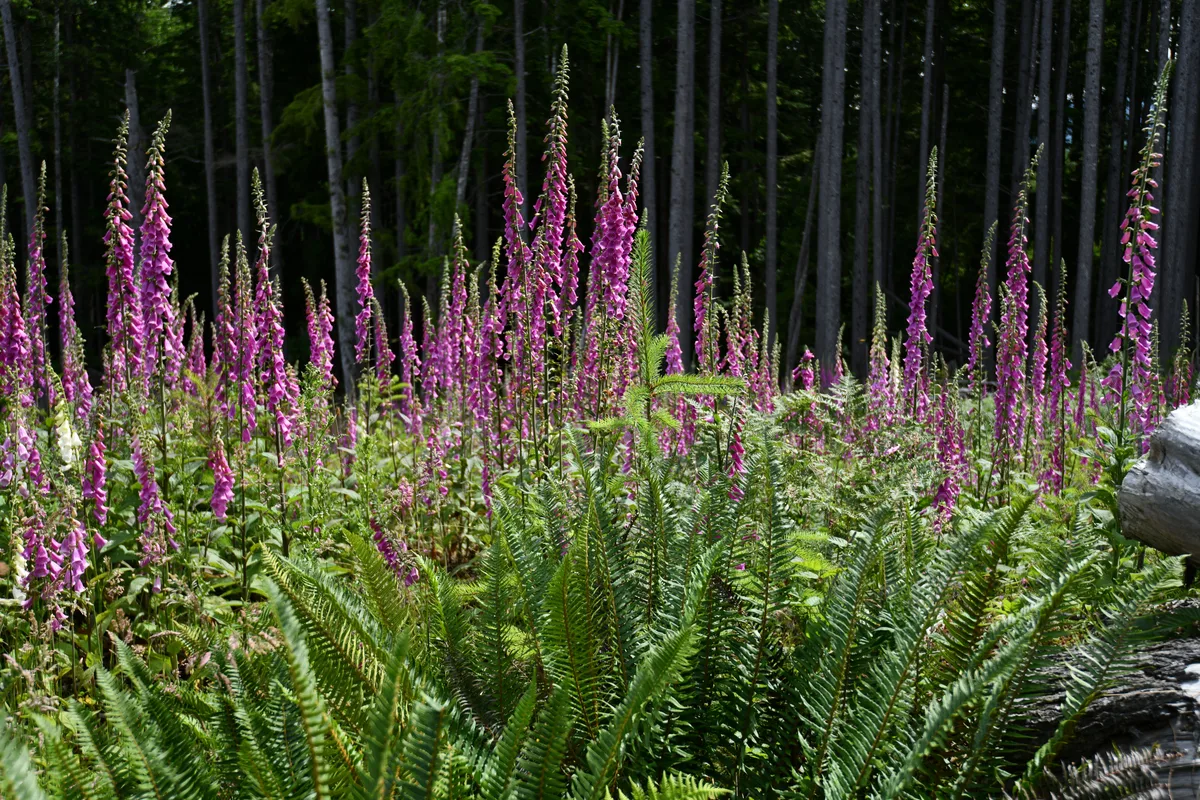
Secret #2: Foxglove’s Favorite Light Exposure
Foxglove can handle the full spectrum from full sun to full shade.
While foxglove is a notable plant for thriving in the shade, in cool, humid areas, more sun will make more flowers.
In hotter, drier climates, foxglove will enjoy some afternoon relief of shade and extra moisture.
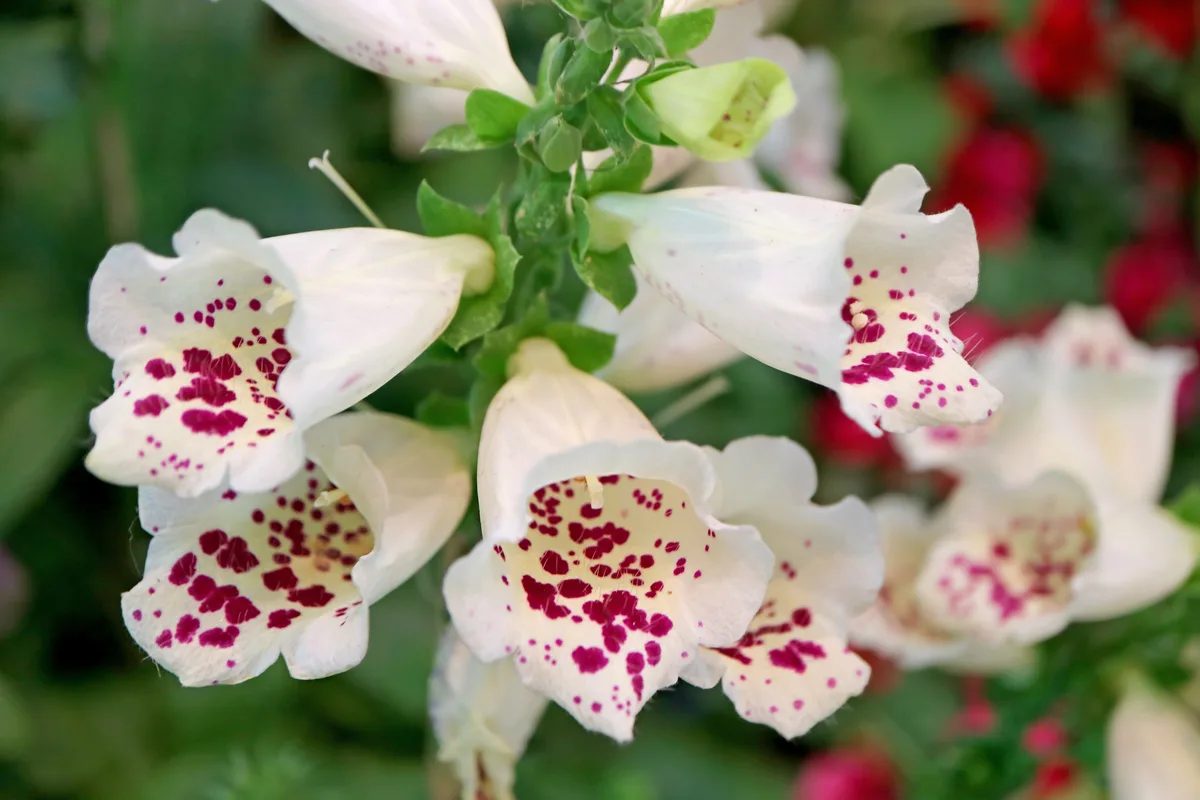
Secret #3: Foxglove’s Favorite Location
Foxgloves are a long-blooming favorite in lavish country gardens and practical cottage gardens alike.
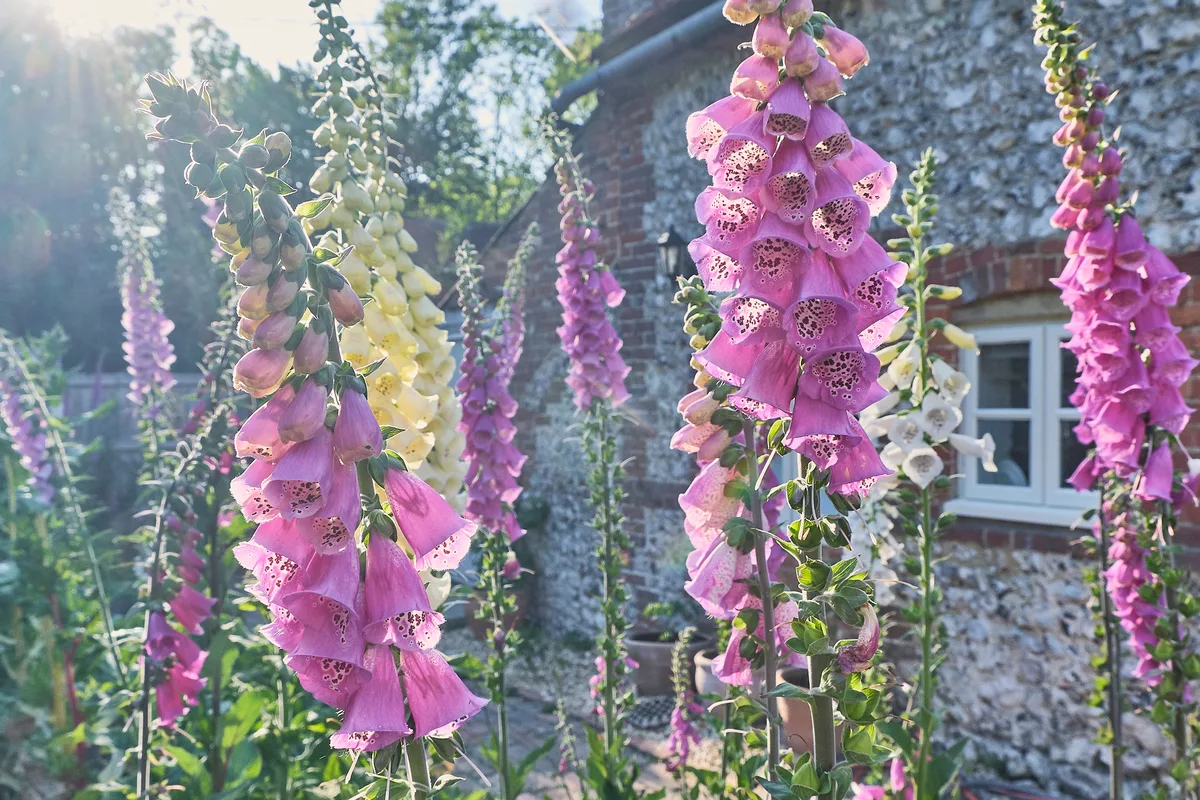
While foxgloves play well with others, the tall spires are fantastic at the back of borders.
Placing foxglove behind shorter flowers will help to hide its foliage which can be a little worse for wear after their 2- to 3-month bloom time.
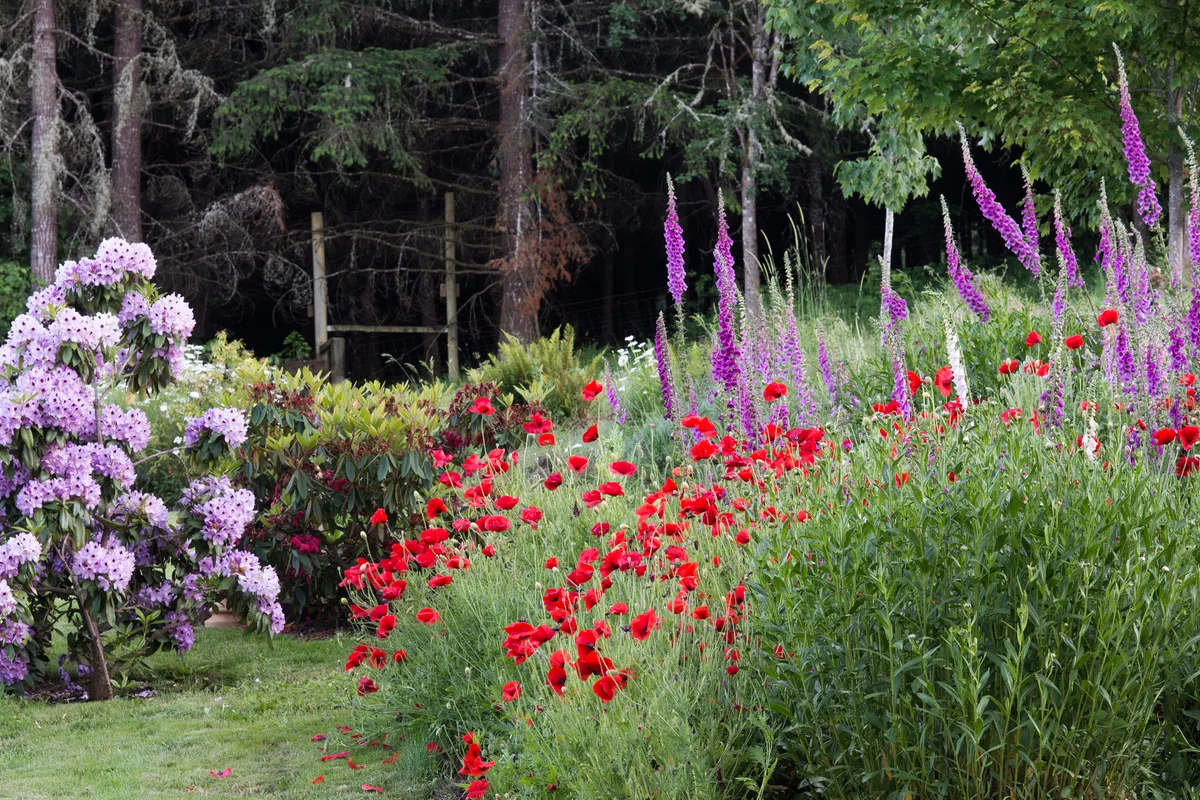
Hot Tip* Protect plants that are vulnerable to deer by planting them with impressively deer-resistant foxgloves.
Secret #4: Foxglove’s Favorite Growing Zone and Climate
Moist areas with cool temperatures combined with good air circulation and well-draining soil are the secret to flourishing foxgloves.
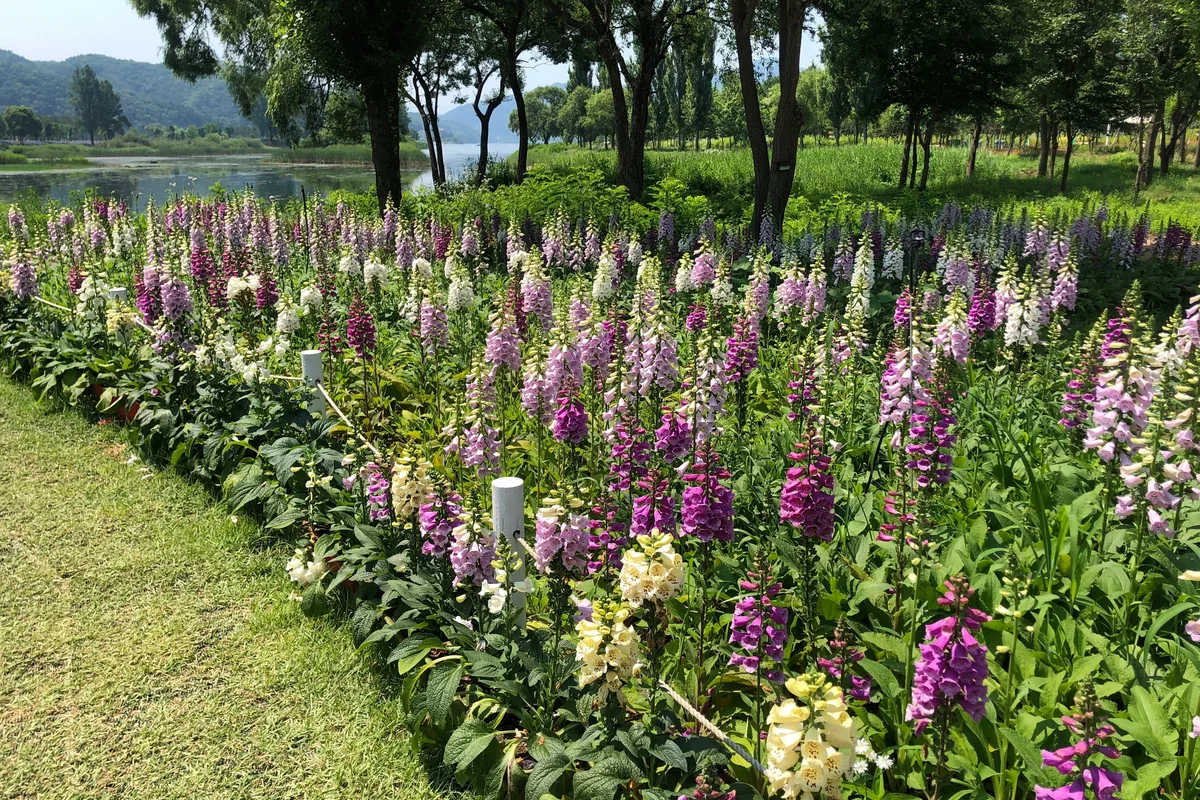
Grow foxgloves in zones 4 to 9 and provide about 1 inch of water per week.
At temperatures above 90° F, your foxgloves will appreciate some extra water and sun protection.
Secret #5: Favorite Foxglove Varieties
Find your favorite foxglove features of bloom color and plant height to maximize your fantastic foxglove joy.
Foxglove feature brilliant, dappled colors that consistently look fabulous in pink-themed gardens.
The ‘Candy Mountain’ series has upward-facing flowers on 3-to-4-foot plants.
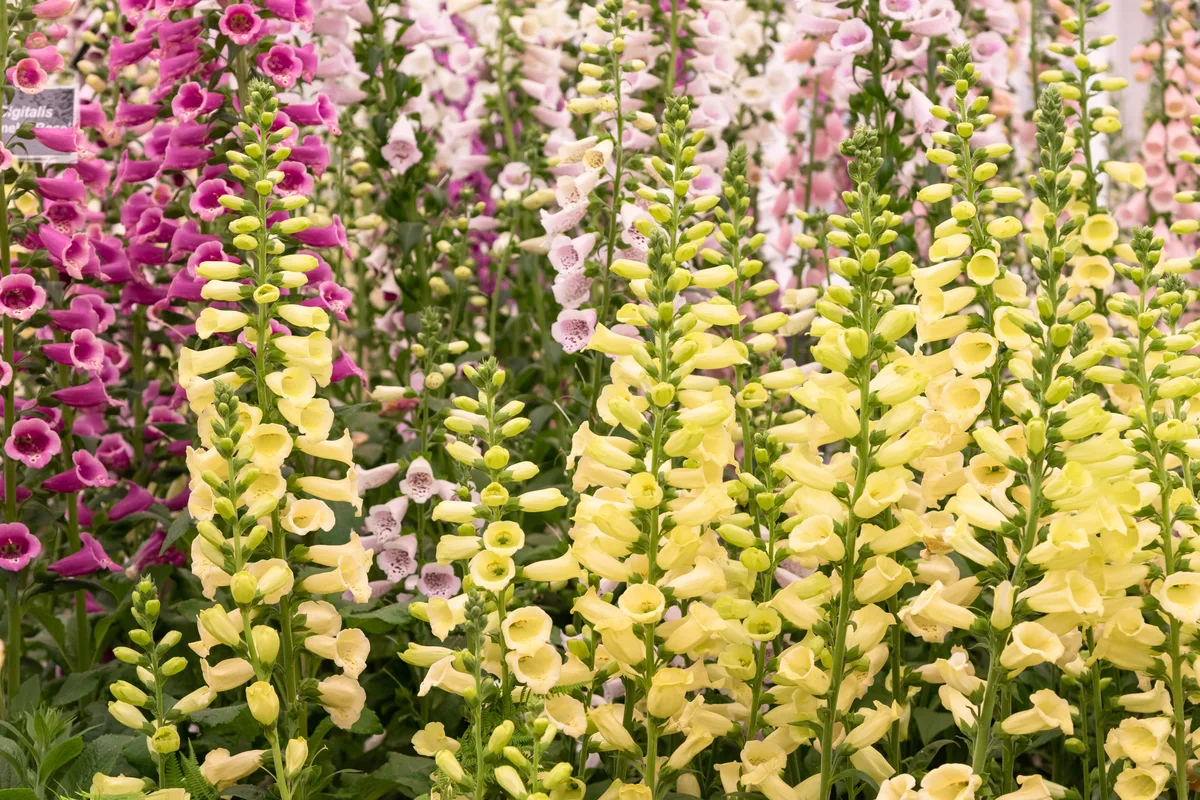
The Giant ‘Excelsior’ series are incredible, reaching 4 to 6 feet tall in a variety of colors.
Short cultivars that rarely require staking are available. Notably, the ‘Foxy’ varieties grow about 27 inches tall.
For first-year blooms, look for ‘Camelot’ varieties available in lavender, rose, cream, and white. While not 100%, these 2 ½ to 3 ½ foot plants may produce blooms in their first year.
Another foxglove bred to bloom in its first year, (at 10 weeks so start them early!), is the ‘Dalmatian’ series in purple, peach, and crème.
The ‘Polkadot’ series, with delightful names like ‘Polkadot princess’, ‘Polkadot Pippa’, and ‘Polkadot Polly’, grows 2 ½ feet tall with massive 3- to 4-inch-long blooms.
Secret #6: Winter Care for Foxgloves
Because foxgloves are biennials, once they have bloomed and made seeds, they have completed their lifecycle.
You might leave them in place for winter interest and to spread their seeds or they can be pulled and composted like annuals.
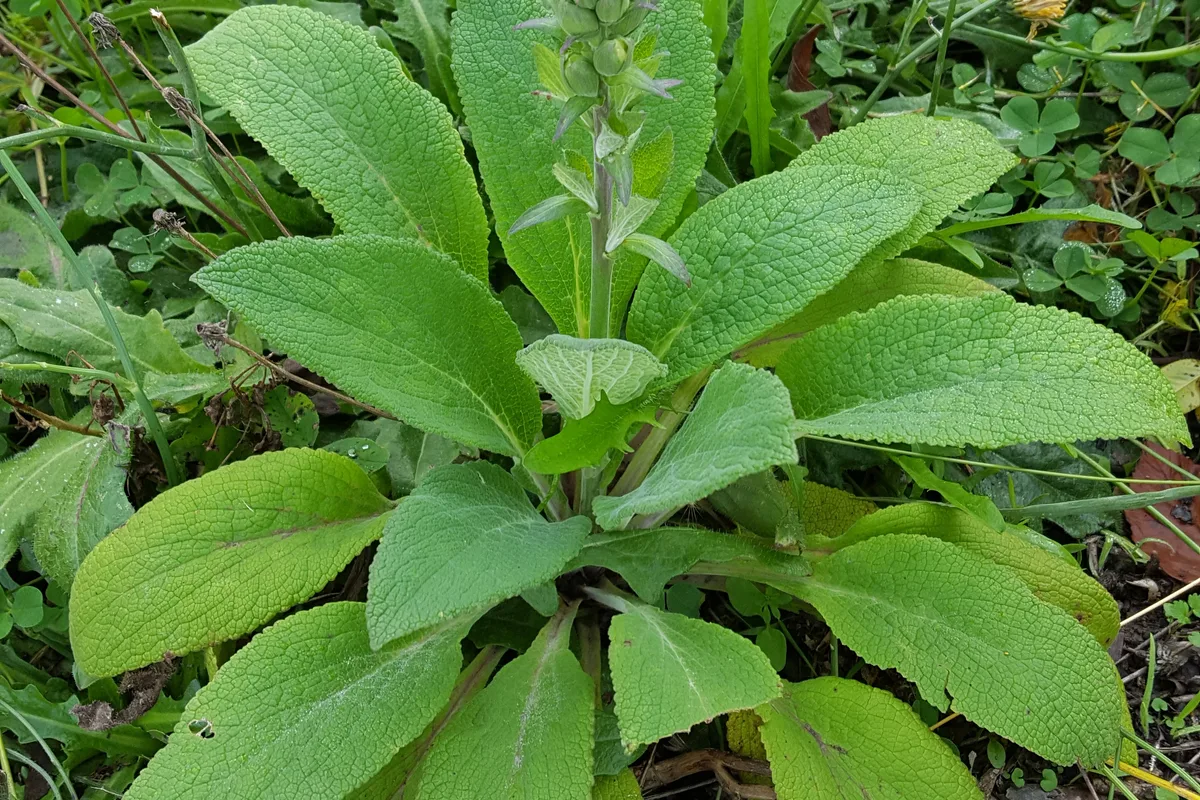
Keep in mind, that there are some perennial foxglove species so be sure not to discard these!
First-year plants, however, need to be protected through winter. Cover with leaves, straw, or mulch to protect young foxglove plants from winter temperature fluctuations.
To avoid crown rot and root rot, remove the cover in early spring to allow the plant to flourish.
Secret #7: Deadheading Foxgloves
Two schools of thought will determine if you deadhead your foxgloves or not.
While many annuals, biennials, and perennials will flush a second bloom after deadheading, not all foxglove types will do this.
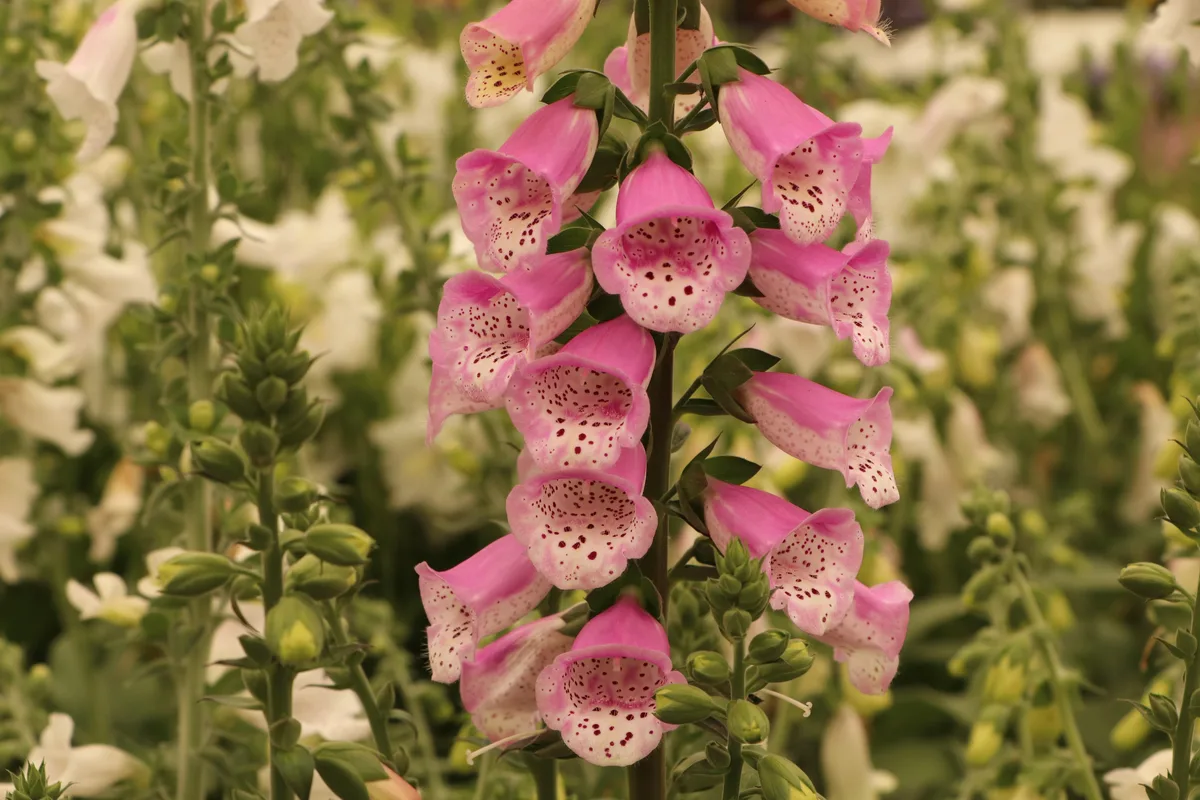
Moreover, foxgloves have a seriously long bloom time of 2 to 3 months. Deadheading to extend the bloom season may not be necessary.
However, deadheading your foxgloves will result in reducing the massive quantity of seeds your foxgloves are capable of making.
In addition, if you want to limit the seeds your foxglove produces, either for tidiness’ sake or to reduce a foxglove invasion, deadheading may be your style.
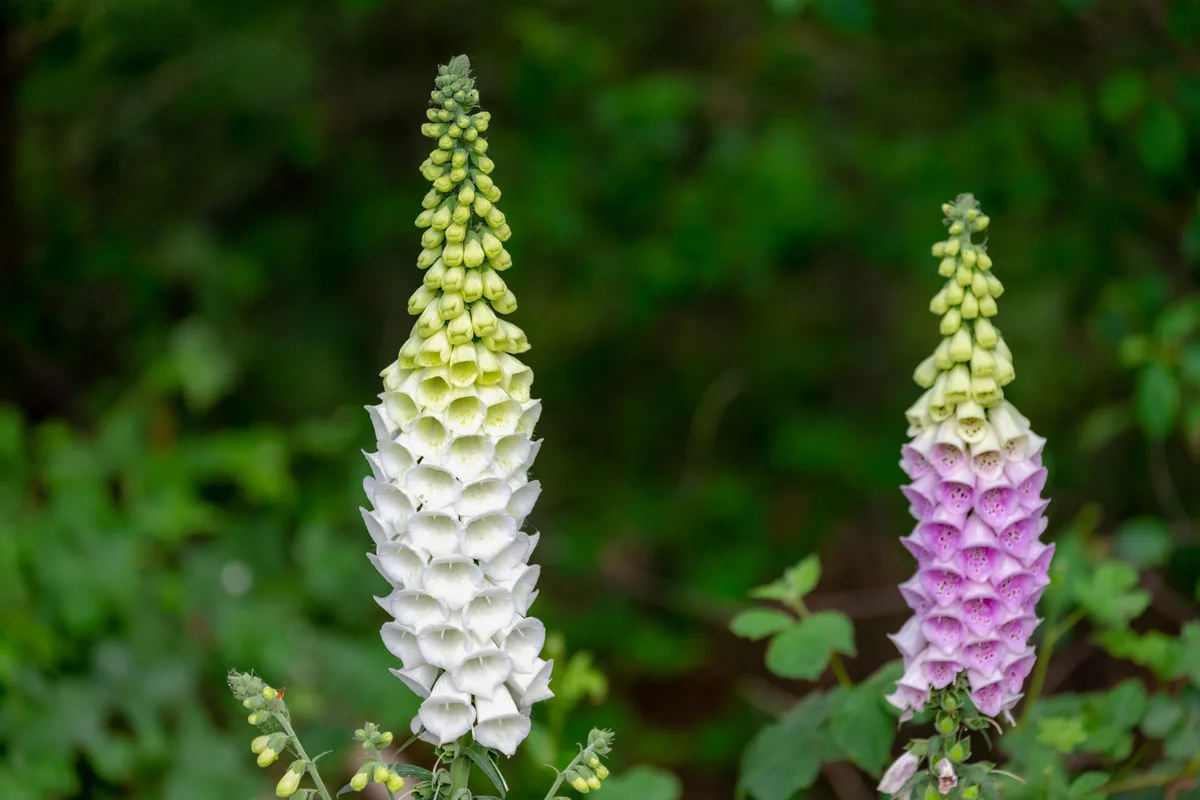
Even if you are saving seeds, it might make sense to deadhead all the lesser-quality flower stalks. This will look tidy and will result in the best seed supply as well.
Here are more tips on deadheading flowers.
Secret #8: Propagating Foxgloves
Yes, foxgloves are an excellent choice for a self-seeding garden!
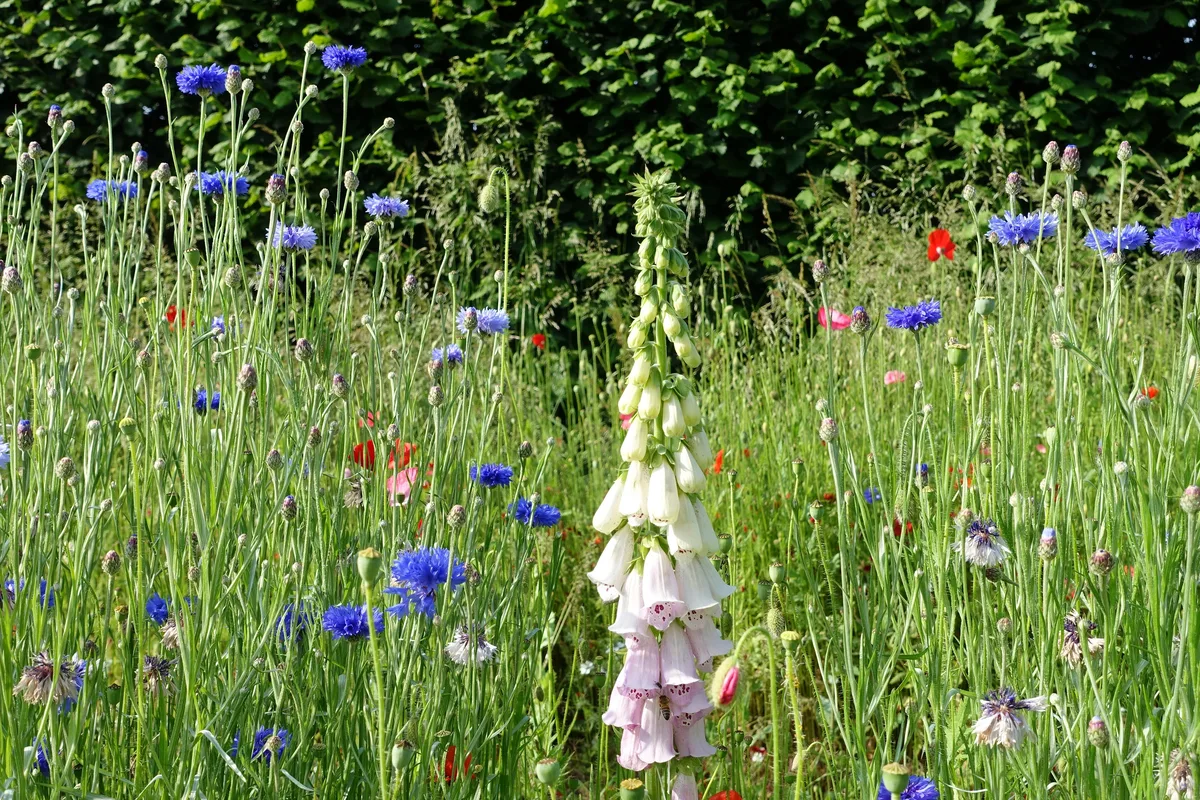
In perfect conditions of rich moist soils in full sun to part shade, your foxglove may naturally reseed itself.
As a biennial, two-year-old plants will bloom and produce seeds that are ready to harvest in late summer.
Plant your foxgloves two years in a row, allow them to shed their seeds, and a gorgeous colony of ever-reproducing biennials will follow.
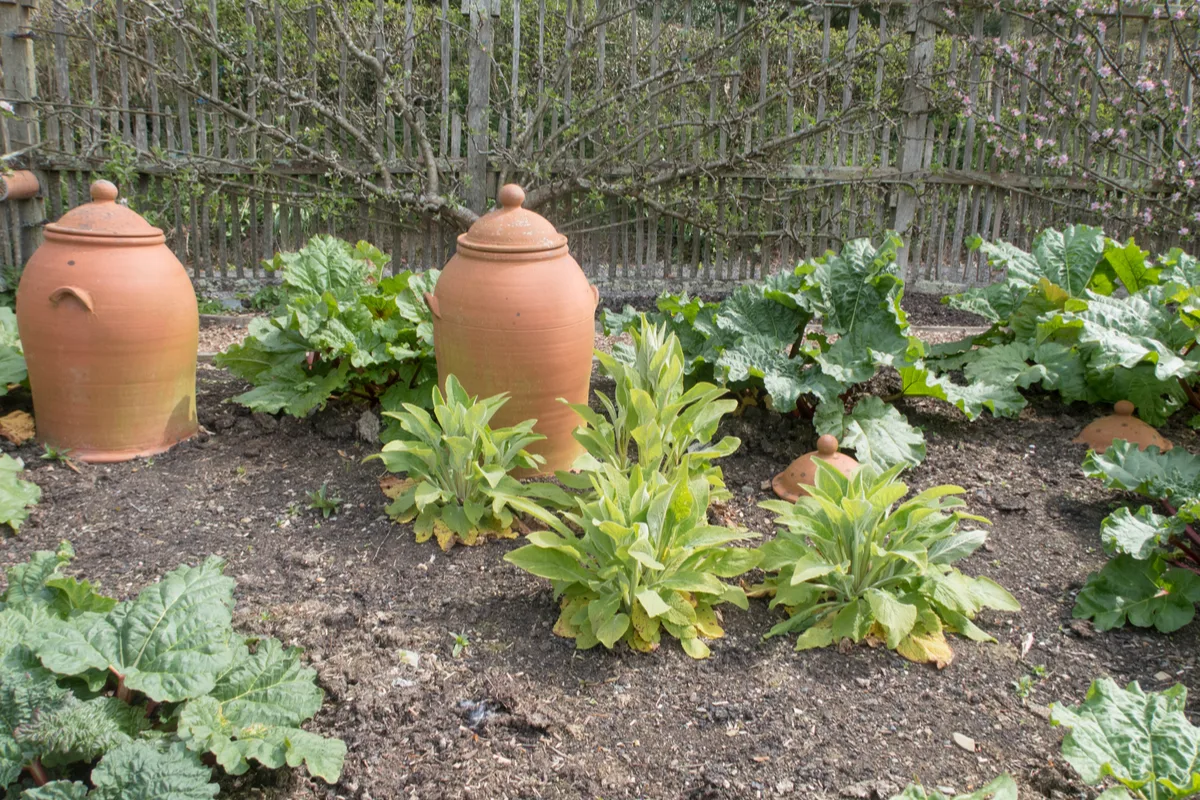
The seeds are prolific! In spring, thin the volunteer seedlings to 18 inches to maximize plant health and vibrancy.
Foxglove seeds can also be started indoors 8 to 10 weeks before the last frost, at 60° to 70° F with germination in 14 to 21 days.

Secret #9: Foxglove Friends and Companions
Cottage gardens and perennial borders will only look better with foxgloves!
Roses love foxgloves and they certainly are complementary.
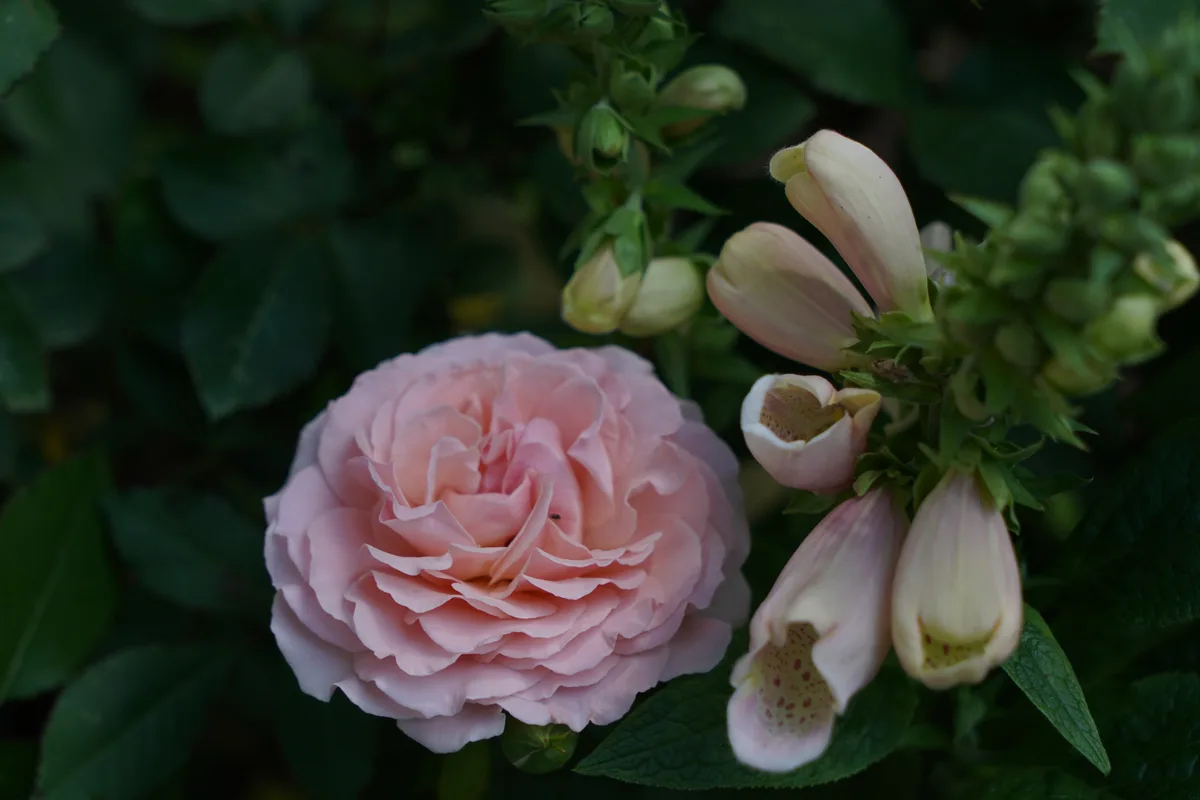
Gardens full of vertical interest and drama with delphinium, hollyhock, snapdragons, astilbe, and garden phlox will only be improved with foxglove.
Lovely shorter perennials, complementary or contrasting colors, interesting foliage, and successional bloom times are things to consider with planning friends for your foxgloves.
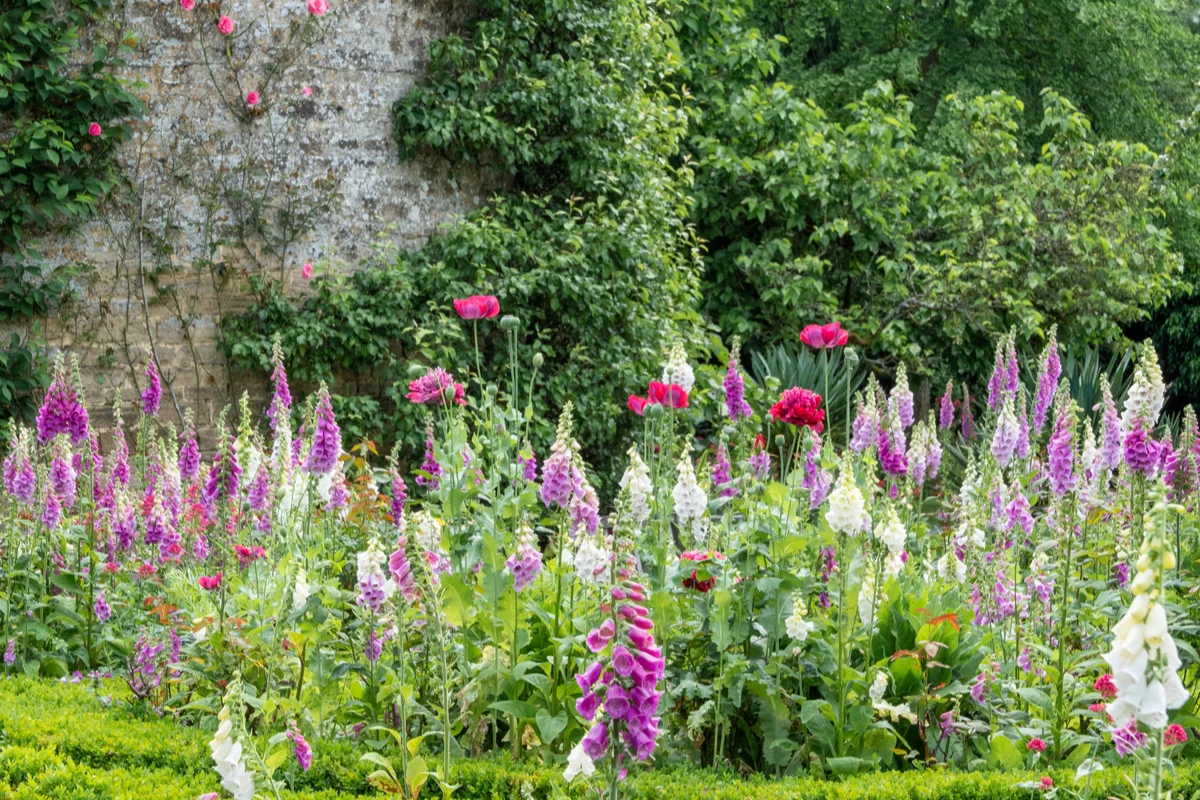
Peonies, daisies, dianthus, petunias, poppies, and zinnias are particularly favorable for foxglove gardens.
Secret #10: Avoid Foxglove Pests and Diseases
Like plants that love moist, rich gardens, foxgloves may be troubled by aphids, slugs, and fungi such as powdery mildew.
Good air circulation, well-draining soil, and encouraging predatory insects are usually enough to keep foxglove pest and disease-free.
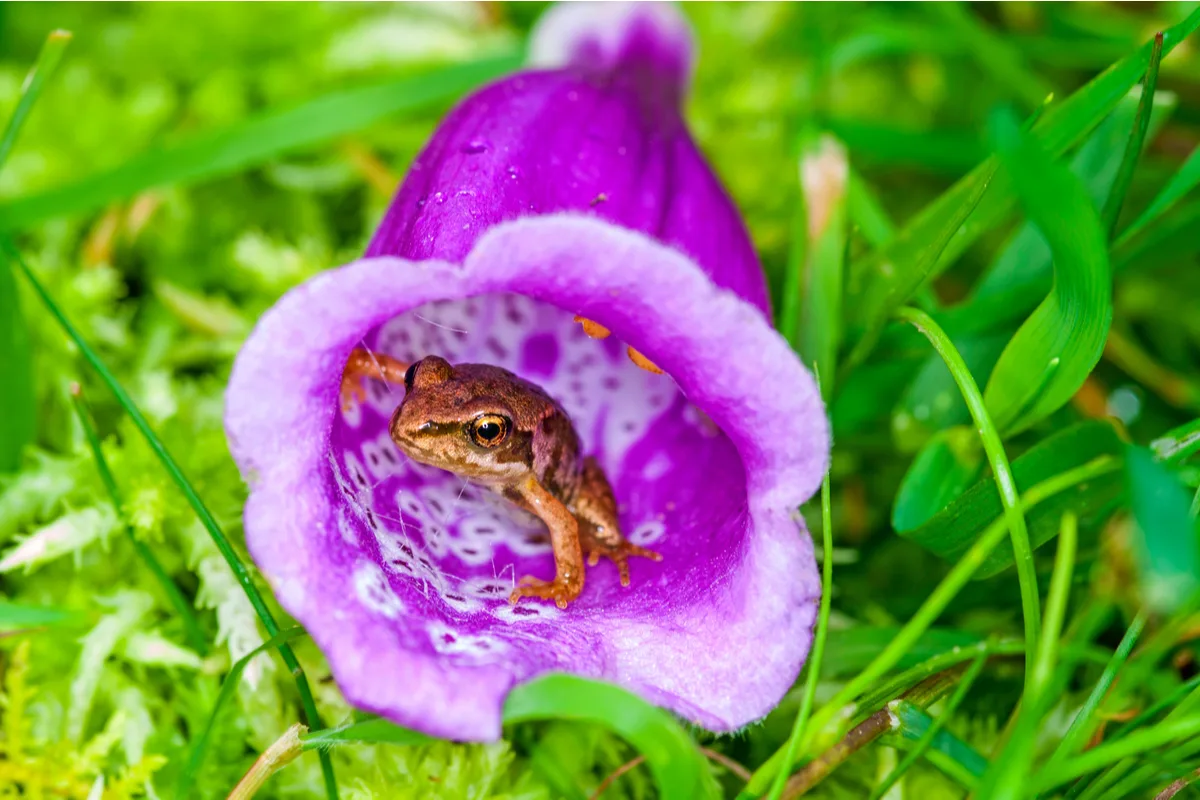
Foxglove Snapshot
| Botanical Name | Digitalis purpurea |
| Common Names | Foxglove |
| Plant Type | Herbaceous flowering biennial |
| Native Origin | Europe, Asia, Northwest Africa |
| USDA Hardiness Zone | 4 to 9 |
| Flower Color | Pink, purple, white, red, cream, yellow, and delightfully speckled |
| Bloom Time | Late spring to early summer |
| Growth & Size | 2 to 6 feet tall depending on the variety |
| Exposure | Full sun to full shade. Needs shade in hot areas. Blooms better in sun in cooler places. |
| Suitable Soil & pH | Rich, moist, well-draining organic soil with a pH of 5.5 to 6.5. |
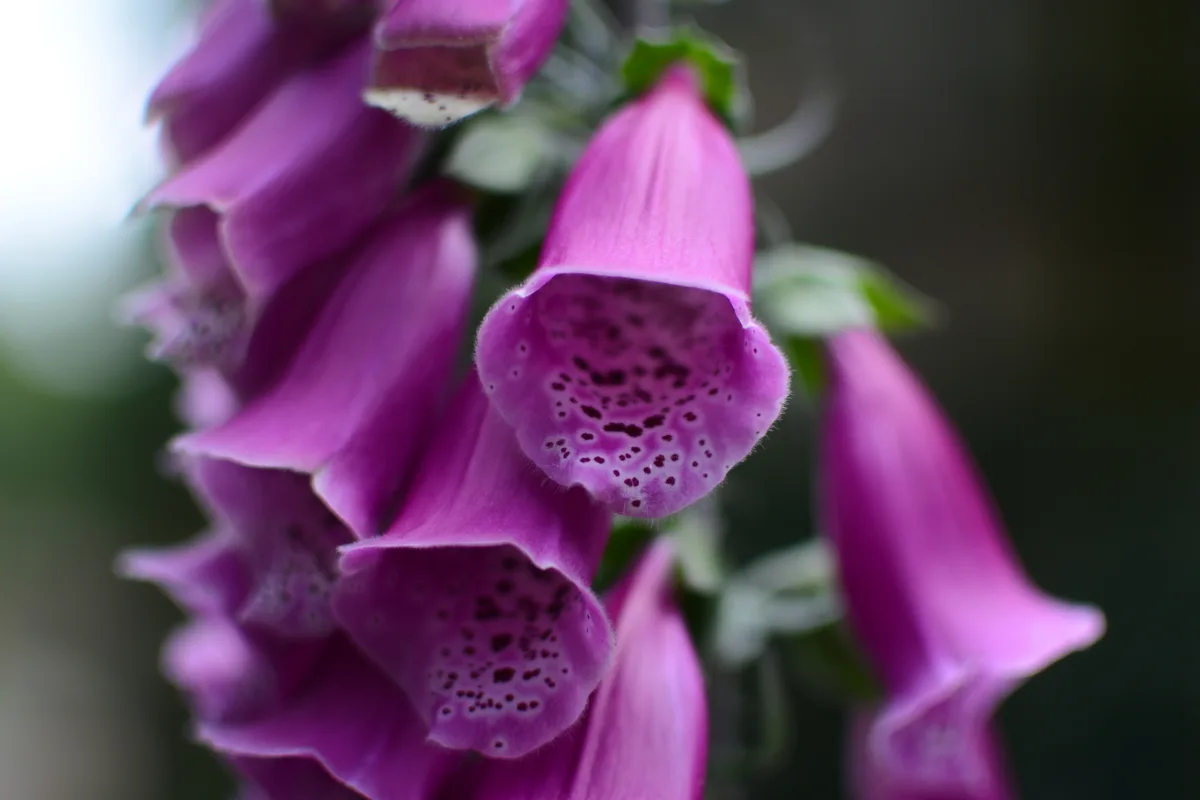
With these ten secrets for beautiful foxgloves, fantastic foxgloves will give you dramatic upright interest with abundant tubular blooms.

